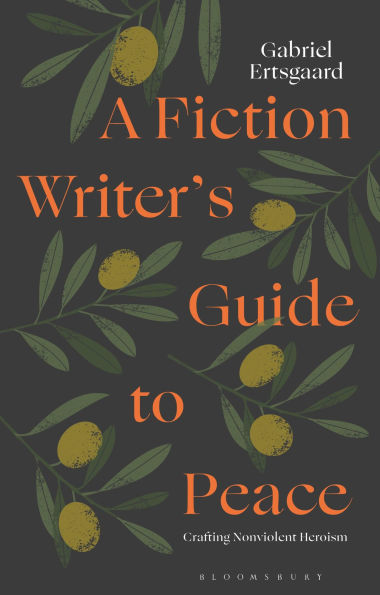Superhero violence and graphic action sequences are prevalent on the screen and on the page, but this book takes an alternative route with practical guidance, frameworks, and tools for incorporating the principles of peacebuilding and nonviolence into compelling fiction. By mapping a path less travelled but just as vital in divisive times, Gabriel Ertsgaard shows writers how they can enact nonviolent heroism in their characters, model civil resistance in their stories, and create worlds around a mythos that champions redemptive nonviolence. With concepts applicable to writing for fiction, drama, the screen, and narrative poetry, A Fiction Writer's Guide to Peace deconstructs the necessity for violence in popular works, explores key concepts in peace studies, and helps writers establish their own peace poetics. Focused around the narrative craft techniques of character arcs, campaigns, duels, and worldbuilding, the book features numerous creative writing prompts and examples from key works. These include films such as Trading Places, Selma, Lage Raho Munna Bai, and Frozen and literature ranging from Shakespeare's plays to Dickens' A Christmas Carol to Julia Quinn's Bridgerton novels.
A timely and important expansion to any writer's toolkit, A Fiction Writer's Guide to Peace allows storytellers to understand the complex dynamics of, and the damage caused by, violent perspectives and actions, giving them a way into considering nonviolence as powerful and preferable.
1145552955
A timely and important expansion to any writer's toolkit, A Fiction Writer's Guide to Peace allows storytellers to understand the complex dynamics of, and the damage caused by, violent perspectives and actions, giving them a way into considering nonviolence as powerful and preferable.
A Fiction Writer's Guide to Peace: Crafting Nonviolent Heroism
Superhero violence and graphic action sequences are prevalent on the screen and on the page, but this book takes an alternative route with practical guidance, frameworks, and tools for incorporating the principles of peacebuilding and nonviolence into compelling fiction. By mapping a path less travelled but just as vital in divisive times, Gabriel Ertsgaard shows writers how they can enact nonviolent heroism in their characters, model civil resistance in their stories, and create worlds around a mythos that champions redemptive nonviolence. With concepts applicable to writing for fiction, drama, the screen, and narrative poetry, A Fiction Writer's Guide to Peace deconstructs the necessity for violence in popular works, explores key concepts in peace studies, and helps writers establish their own peace poetics. Focused around the narrative craft techniques of character arcs, campaigns, duels, and worldbuilding, the book features numerous creative writing prompts and examples from key works. These include films such as Trading Places, Selma, Lage Raho Munna Bai, and Frozen and literature ranging from Shakespeare's plays to Dickens' A Christmas Carol to Julia Quinn's Bridgerton novels.
A timely and important expansion to any writer's toolkit, A Fiction Writer's Guide to Peace allows storytellers to understand the complex dynamics of, and the damage caused by, violent perspectives and actions, giving them a way into considering nonviolence as powerful and preferable.
A timely and important expansion to any writer's toolkit, A Fiction Writer's Guide to Peace allows storytellers to understand the complex dynamics of, and the damage caused by, violent perspectives and actions, giving them a way into considering nonviolence as powerful and preferable.
26.95
In Stock
5
1

A Fiction Writer's Guide to Peace: Crafting Nonviolent Heroism
184
A Fiction Writer's Guide to Peace: Crafting Nonviolent Heroism
184Related collections and offers
26.95
In Stock

Product Details
| ISBN-13: | 9781350473973 |
|---|---|
| Publisher: | Bloomsbury Publishing |
| Publication date: | 06/26/2025 |
| Sold by: | Barnes & Noble |
| Format: | eBook |
| Pages: | 184 |
| File size: | 601 KB |
About the Author
From the B&N Reads Blog
